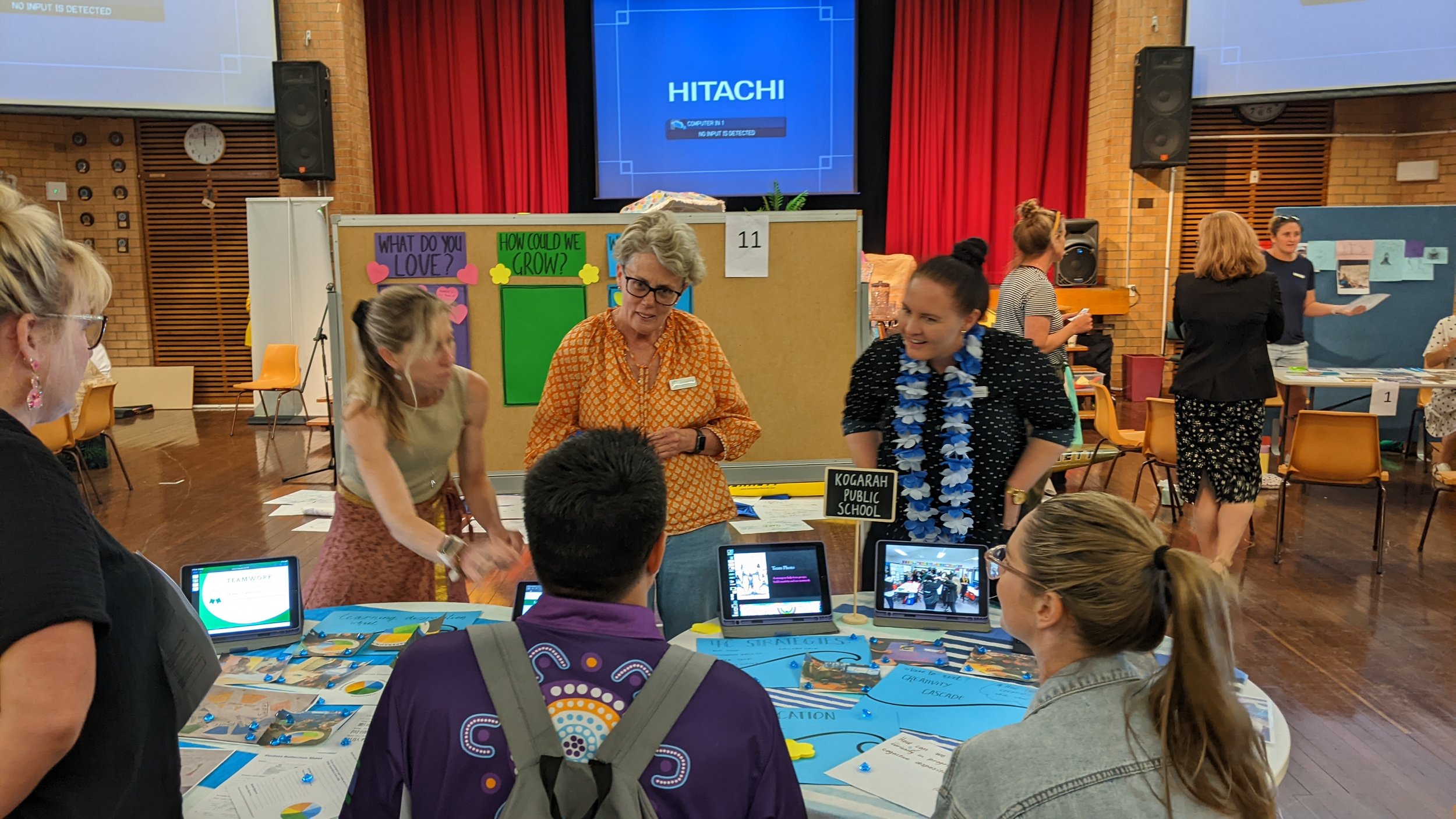ADDRESSING CHALLENGING BEHAVIOUR
WITH STUDENT METACOGNITION
Addressing Challenging Behaviour With Student Metacognition
A 4CTL Case Study from Kogarah PS, 2022
Using the Learning Disposition Wheel To Grow Student Self-Regulation at Home and School
As told at our Nov 2022 Network Days Event, by Liz, Jodi and Brianna from Kogarah Public School
We began partnering with 4CTL in 2019. While in 2020 & 2021 things were a bit tricky, we stayed connected to our exploration of learning dispositions. Some of which proved more important than ever!
We’ve come back strong again in 2022 and we’re excited to share some of the things the teachers and our students have been learning.
The Learning Disposition Wheel underpins most of what we do at Kogarah PS. We began by increasing teacher knowledge & value of the dispositions, to ensure we had a solid understanding of what the dispositions are.
We then began using the Wheel with our students, starting with growing their understanding of the dispositions, and helping them learn what their strengths were, what their yet-to-be strengths were in different learning situations.
We also build parent knowledge of the dispositions through our school newsletter, having articles that were followed by student interviews, focusing on the dispositions and what they mean to the students.
We built a focus on the dispositions into our teacher learning program and our community language programs, which involve Hindi, Chinese and Nepali. We are translating the dispositions into these languages, developing and deepening the teachers’ knowledge and confidence through the translation process.
Using quality cultural stories from these language groups, to help identify the dispositions used by the characters, has provided another opportunity to authentically integrate the wheel into student learning.
Using critical reflection processes with students has been very important. We get students who have struggled to adhere to a school rule to reflect on their behaviour and what led to it, using the dispositions as a frame for them to make sense of their learning behaviours.
We then use this reflection to co-develop an action plan with the student, who picks two dispositions they can focus on improving, to help them self-regulate in future.
This allows the student to better understand themselves, but also allows the executive staff member to help guide the student in seeing other dispositions that could be harnessed when a similar situation arises again.
This action plan goes back to the classroom teacher and to the student’s family, so that the knowledge of these dispositions, and how we want to grow the student strength in those dispositions, can be used in all areas of school and at home.



